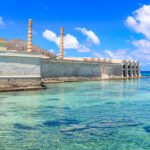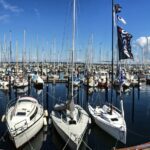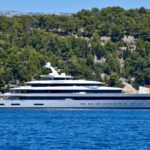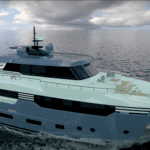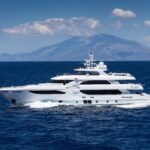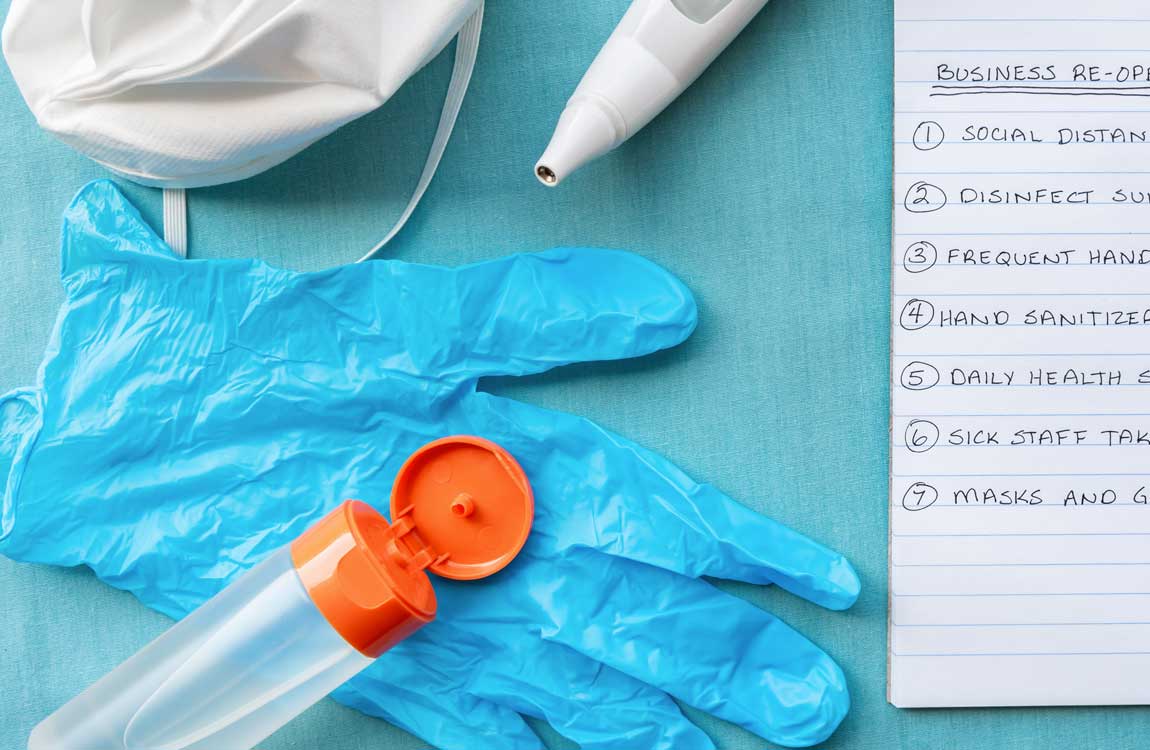
The Mediterranean season is about to start and this year it is going to be a bit unusual due to the situation that is affecting our daily living worldwide. At Moncada Yachts we are implementing all safety procedures to assure our guests a COVID free holiday. Our crew members are trained to professionally manage any event – also health related – to ensure a safe and smooth yacht charter. Find out about all the Moncada protocols and recommendations for crew members.
1. Crew members returning from vacation or travel
– Isolate for 14 days off the vessel. If not possible isolate within their cabin (single person no sharing)
– For crew members having to go off the vessel that has been at sea for 14 days. Upon return, that crewmember should be observed closely for signs of infection, and during the incubation period, strict social distancing should be observed
2. Crew members on board
– At the beginning of the week, a self-evaluation questionnaire should be completed
– Anybody showing symptoms or has come in contact with an at-risk individual should be preferably quarantined or isolated off the vessel for 14 days
– Off-board shoes, should where possible be left off the vessel and when changing from off-board to on-board shoes have a step transition area, ie take one shoe off, step over the line place the on-board shoe on, then repeat. Coming off the vessel, it is the reverse
– Crew members should practice social distancing in the mess, where possible keeping a distance of 1.5m between crew members when socialising and eating. We appreciate this can impact break and lunch rotations.
– The heads should be thoroughly cleaned every 3 hours, and personal hand sanitizer should be carried at all times. Please note when turning on/off taps that this is a source of recontamination, so please use a paper towel or sanitise hands straight away afterwards.
– Plenty of liquids available for drinking, preferably in individual containers. Cups and utensils should be immediately washed and placed in the steriliser by individuals using them to avoid second handling.
– The table area used for eating/drinking should be immediately cleaned by the individual upon vacating.
– Uniform should be changed daily. When taking off place directly into the laundry bag and wash on the hot setting (full cycle)
3. Contractors/Visitors to the vessel
– For any contractors or visitors coming on-board, they should fill out a health check form ahead of time. If they show any signs or have been to an infected area, they should be denied boarding.
– Another precaution that may be of benefit is any visitors on-board to wear a surgical mask, as this would capture droplets from their breath, again reducing the hazard, but should be trained in their proper use i.e. not taking them off their face.
– All flat areas should be cleaned several times a day, and the interior crew should wear gloves, eye shield and mask for higher risk areas (day heads of contractors, etc.). Having only one crew member cleaning the day heads also reduces the risk.
– For drop-offs and pickups, ideally, arrange off the vessel at a designated area. It is unknown how long the virus can survive on inanimate surfaces; this could be hours or even days in the case of cold weather. Although transmission is believed to occur mainly through person to person respiratory droplets, packaging could be wiped down with sanitizer, before entering the vessel, which might help mitigate that risk.
– Fresh foods can be treated the same way, with drop-offs and once on-board washed thoroughly (where appropriate).
4. Crew members showing signs of respiratory illness
– Please follow basic isolation procedures until a crew member can be tested. The crew member is to be isolated in their cabin and heads. Ensure the cabin is well ventilated and if possible with a porthole. Ensure the crewmember gets several hours of sun and fresh air per day.
Any time a crewmember receives a visitor, they should don a fresh surgical mask
– Single crewmember assigned to monitor and tend to the sick crew member.
– All food to be delivered to the cabin on disposable plates and cups
– At least four hourly observations, ask specifically about any shortness of breath if there is a finger pulse oximeter the crewmember can take their own pulse and oxygen saturation. If needed for more than one patient, clean and sanitise between patients. If shortness of breath develops, or the oxygen saturation drops below 95%, or the temp is 38.5 degrees or above – immediately contact MedLink
In all cases of suspected COVID-19 infection, contact MedLink immediately for further advise and follow up
– Medic to wear a mask (N95), eye protection, gown and gloves when entering and leaving the room. The gown can be reused but must always be hung up inside out as this reduces the fomite contamination risk
– Immediately dispose of the gloves and mask.
– Hands should also be washed with soap and water or hand sanitizer after exit
5. Additional Notes
– All crew should practice basic cares, such as avoiding touching the face and nose unless hands have been cleaned.
– Coughing or sneezing into their armpit. The crew should carry on their person a small bottle of hand sanitizer and use frequently.
– At the first sign of sickness, the crew member should immediately put on a face mask and call the designated medical officer.
– Any crew member with a general cold should wear a basic surgical mask
– All suspected cases should be reported to MedLink for further advice and care plan.
– All crew should be given the pocket guide attached and prevention posters placed in communal areas
6. Medical Kit/Supplies
Although there are a number of medications being tested, so far there has been no published results indicating that they would be effective in the prevention or treatment of COVID-19 infection. We are, however, monitoring these very closely for any changes. To that end, COVID-19 is a respiratory viral infection, so antibiotics will be ineffective and potentially harmful if taken for treatment so if anybody does get sick on board, our treatment consists of supportive measures including the following:
– Paracetamol for pain relief and to help reduce fever
– Increased fluids – diluted apple juice and water seems popular
– Isolation and rest
Each case needs to be assessed on a case by case basis. Key risk factors are age, and other pre-existing medical conditions especially cardiovascular disease, diabetes and respiratory illness.
At this time, we believe based on Global Medical Kit which you have that if someone does present COVID-19 symptoms, there is sufficient medical equipment and medication to manage those cases on board until they can be evaluated shore side and tested. In the rare case where a crew member or guest becomes sicker than expected, the key indicator is shortness of breath.
Tempus IC on-board
We would suggest setting up the Tempus IC monitor with a specific recommendation for SP02, respiratory capnography, monitoring, blood pressure and temperature.
– Ensure you are familiar with how to apply the pulse oximeter and CO2 (capnography) monitors on the Tempus IC, as MedLink may ask you to use it and provide data
– SP02 – resting pulse is approx. Between 60 – 90 BPM, normal SP02 is 96 – 100%. If the person is having difficulty in breathing and maintaining oxygen saturation on room air (<95%), contact MedLink, and place them on oxygen at around 4 – 6L per minute initially.
– If shortness of breath occurs, we may recommend specific medications (which can be found in the emergency medications in your kit) to reduce their difficulty in breathing. Please call MedLink to speak with our medical team first before administering any medication.
As well as the above, we would be watching very closely for complications on infection, which could include opportunistic bacterial pneumonia and acute respiratory distress syndrome (ARDS). There are more than adequate antibiotics to manage the bacterial infection, but with ARDS, it is a medical emergency, so the patient should be evacuated to an Emergency Department, if not done so already. To reduce secondary bacterial infection, all patients are encouraged to breathe deeply and if on bed rest, sitting up at a 20 – 35-degree angle. They are encouraged to drink plenty of fluids and to be mobile as much as possible.
Page updated on 16 June 2020

